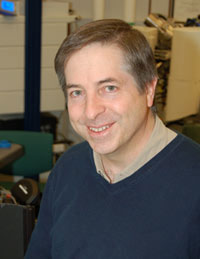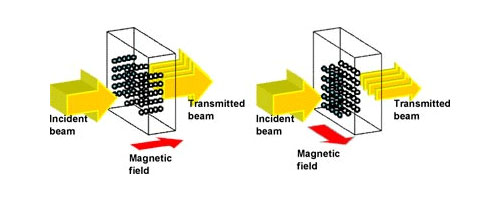Sensors: A portable device for virus detection
 A device that runs on batteries and fits in the palm of your hand can detect viruses in just 35 minutes.
A device that runs on batteries and fits in the palm of your hand can detect viruses in just 35 minutes.
Oct 27th, 2010
Read more
 A device that runs on batteries and fits in the palm of your hand can detect viruses in just 35 minutes.
A device that runs on batteries and fits in the palm of your hand can detect viruses in just 35 minutes.
Oct 27th, 2010
Read moreA new breed of microfluidic devices can accelerate drug discovery by making it possible to assess the effects of thousands of drug candidates on ion channels simultaneously.
Oct 27th, 2010
Read moreThe European Consumers' Organisation (BEUC) has published its 2010 inventory of products containing nanomaterials.
Oct 27th, 2010
Read morePhysicist Robert Huber, who leads a Junior Research Group at Ludwig-Maximilians-University (LMU) Munich, becomes the latest recipient of one of the coveted Starting Grants awarded by the European Research Council (ERC). The grant is worth 1.2 million Euros over a period of 5 years.
Oct 27th, 2010
Read moreBy combining an iron oxide nanoparticle, a tumor-targeting peptide, and a therapeutic nucleic acid into one construct, a team of investigators from the Massachusetts General Hospital and Harvard Medical School have created an agent that holds potential as targeted therapy for breast cancer.
Oct 27th, 2010
Read moreScientists have shown that the safety of gold nanoparticle-nucleic acid formulations depends significantly on how the nucleic acids and nanoparticles are linked to one another, a finding with important implications for those researchers developing such constructs.
Oct 27th, 2010
Read moreResearchers at the Massachusetts Institute of Technology (MIT) and Brigham and Women's Hospital have developed a nanoparticle that can deliver precise doses of two or more drugs to prostate cancer cells. Such particles, say the researchers, could improve the effectiveness of chemotherapy while minimizing the side effects normally seen with these drugs.
Oct 27th, 2010
Read moreThough targeted nanoparticle-based imaging agents and therapeutics for diagnosing and treating cancer are making their way to and through the clinical trials process, researchers still do not have a good understanding of how nanoparticles reach tumors and how they then bind to and enter the targeted tumor. To overcome that knowledge deficit, two teams of investigators, both part of the Alliance for Nanotechnology in Cancer have undertaken studies aiming to track nanoparticles as they move through living animals.
Oct 27th, 2010
Read moreThe National Nanotechnology Coordination Office (NNCO) is pleased to announce the appointment of Dr. Sally Tinkle as the Deputy Director of the NNCO and Coordinator for Environment, Health, and Safety (EHS).
Oct 26th, 2010
Read moreThe National Institute of Standards and Technology (NIST), in collaboration with IEEE, is inviting teams currently engaged in microrobotic, microelectronic or microelectromechanical systems (MEMS) research to participate in the NIST Mobile Microrobotics Challenge 2011. The competition will be held as part of the IEEE International Conference on Robotics and Automation, May 9-13, 2011, in Shanghai, China.
Oct 26th, 2010
Read more National Institute of Standards and Technology (NIST) physical scientist Henri Lezec and Federico Capasso of Harvard have received the Julius Springer Prize for Applied Physics 2010 for their 'pioneering achievements in nanoscale physics and applications'.
National Institute of Standards and Technology (NIST) physical scientist Henri Lezec and Federico Capasso of Harvard have received the Julius Springer Prize for Applied Physics 2010 for their 'pioneering achievements in nanoscale physics and applications'.
Oct 26th, 2010
Read moreScientists from across Missouri will meet Wednesday, Oct. 27, at Washington University in St. Louis to learn about the latest advances in nanotechnology and opportunities for commercializing them.
Oct 26th, 2010
Read more Japanese scientists report on a new biosensing protocol based on monitoring changes in optical transmittance of a solution containing self-assembled chains of functionalized magnetic beads being rotated by an external magnetic field.
Japanese scientists report on a new biosensing protocol based on monitoring changes in optical transmittance of a solution containing self-assembled chains of functionalized magnetic beads being rotated by an external magnetic field.
Oct 26th, 2010
Read moreResearchers in Japan successfully demonstrate the neural recording capability of micrometer sized VLS-silicon wires -'Toyohashi Probe' - using the retina of a fish.
Oct 26th, 2010
Read moreFrom innovations that enable improved health care and clean energy technologies, to the advent of exciting video games and new crime-solving techniques, the growing impact of nanotechnology on society will take center stage when the College of Nanoscale Science and Engineering of the University at Albany holds its third annual celebration of 'NANOvember'.
Oct 26th, 2010
Read moreSelbstorganisationsprozesse chemischer Bausteine sind die Basis fuer viele biologische Vorgaenge, zunehmend stossen sie auch auf Interesse im Bereich der Materialsynthese. Beispielsweise um hochgeordnete Nanokomposite oder hochporoese Materialien mit besonderen Eigenschaften herzustellen. Forscher stellen nun einen neuartigen, sehr vielseitigen Ansatz vor, mit dem die Synthese einer neuen Familie bioorganisch-anorganischer Nanoverbundmaterialien im grossen Massstab gelingt - mit bisher unerreichter Kontrolle ueber die Beschaffenheit und Struktur der Produkte.
Oct 26th, 2010
Read more